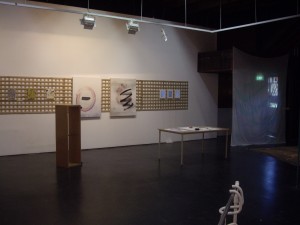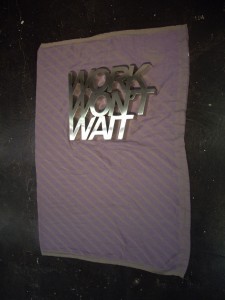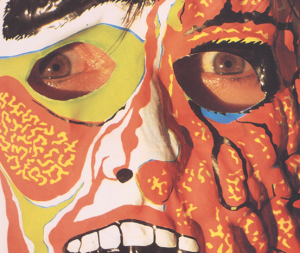Constant loss: ‘Third/Fourth: Melbourne artist-facilitated biennale’, and the 1980s at the NGV
To be honest, I thought that the NGV’s current show about the 1980s in the Melbourne art scene—Mix tape 1980s: appropriation, subculture, critical style—only transmitted the barest sense of the underlying social structure of the times. But then again, I wasn’t there. Afterwards I read Ashley Crawford’s review in The Monthly and although he notes that the energy and variety of the 1980s is ‘almost impossible to articulate comprehensively’, for him the exhibition ‘manages to embrace almost every aspect of this mayhem, and much of the vibrancy and energy of the period remains intact’.
So maybe success is in the eye of the beholder. Or—and I suspect this is more accurate—it’s easier to look back at something (a time or place etc.) if you already have first-hand memories of the subject. I assume Crawford was part of the fabric of the day, cutting his teeth as a critic and commentator alongside the artists, designers and critics whose works form the exhibition. Remove this nostalgic lens and what remains?
Of course the challenge that the curators behind Mix tape 1980s set themselves might be impossible, at least in the face of those in the audience for whom the 1980s remain a kind of mystery. I mean, how do you really communicate the meaning of a time and place retrospectively, especially when constrained by the collection policy of two decades ago?
I couldn’t help thinking about this in terms of another recent show that ‘surveyed’ a period—Christopher LG Hill’s Third/Fourth artist-facilitated biennale. Although the obvious difference between the two exhibitions is that Hill’s was embedded in a still-current moment, Third/Fourth rested under a similar nostalgic weight to Mix tape 1980s. By that I mean you felt yourself looking at this exhibition and thinking about a certain time and place. It just happened that the time was now.
If, judging by Hill’s exhibition, the best time to take the rear-view glance is just before the present merges into the past, then the best people to guide this view are those who still own the activities of making and thinking under review.
It’s not to say that Hill’s exhibition was anything but mysterious for those outside the recent pattern of art-making that it covered. But perhaps the fact it didn’t attempt to explain itself too clearly is what allowed it to accurately picture the underlying social aspect of a moment in the art world.
I couldn’t help picturing Third/Fourth at NGV as a kind of addendum to Mix tape 1980s. But then I wondered if these kinds of exhibitions fear institutions. Or is it the other way around?
Third/Fourth: Melbourne artist-facilitated biennale, Margaret Lawrence Gallery, Victorian College of the Arts, Melbourne, 31 May – 23 June 2013.
Mix tape 1980s: appropriation, subculture, critical style, NGV Australia, Melbourne, 11 April – 1 September 2013.


